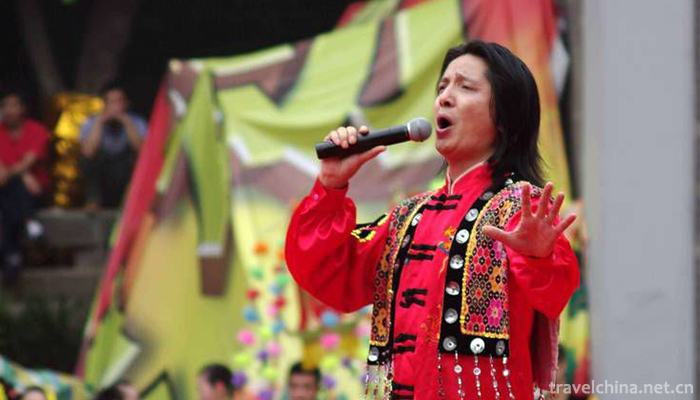Shizhu Tujia Luoer Diao
Shizhu Tujia Luoer Diao originated from Shizhu Tujia Autonomous County, Chongqing. It is a folk song of Luoer tune, which is popular among the Han and Tujia nationalities in southeastern Chongqing. It is named for Luoer in its lyrics.
On May 20, 2006, Shizhu Tujia Luoer was approved by the State Council to be included in the first batch of national intangible cultural heritage list.
historical origin
Shizhu Tujia Luoer Diao has a long history, which is in line with the widely spread bamboo branch CI in Bayu area of Tang Dynasty. Some people believe that "Er Diao" has the ancient "bamboo branch ci" legacy, known as the "bamboo branch ci" living fossil. Because it is easy to improvise, full of life interest, singing and catchy, so it is widely circulated.
artistic characteristics
The tune of Tujia Lore in Shizhu is concise, each tune has a range of less than eight degrees, and there are few decorations in the tune. The tune is fluent, easy to master and easy to sing. Its tones are mostly symbolic, feathery and commercial, with both traditional repertoire and improvisational melody.
The lyrics and sentences are mostly seven-character sentences, which can be improvised, played on the spot, and express the singer's true feelings vividly and vividly. Some songs have the same tune but different lyrics, which are quite "bamboo branch lyrics". Some lyrics are straightforward and popular, which vividly reflect the local Tujia people's life, labor, folk customs, emotions and religious beliefs, and comprehensively record the Tujia people's ritual activities, living conditions and the evolution of national culture.
The rhyme of Er Dialect is simple and rich. Especially in Er Dialect, a large number of habitual dialect linings such as Er, Er and Er are used, which makes the tone of the tune closely combined with the four tones of the local Tujia dialect, and expresses the optimistic, open-minded, wise and humorous character of Tujia people, thus forming a unique style and charm.
During the long period of singing, an independent folk song with rich and varied content, concise and changeable melody and rich local rhyme has been formed, including life song, folk song, love song, couplet song, joke song, chant and countless repertoires.
Representative Works
There are songs such as "The Sun Comes Out Pleasantly", "Long-term Song", "Song of Pregnancy", "Little Lover" and so on.
Inheritance Significance
Children's tunes are rich and varied in content, concise and changeable in tune, rich in local rhyme and have important value in textual research of Bayu's history and exploration of folk songs.
In the 1950s and 1960s, more than 300 people in Shizhu Tujia Autonomous County were able to sing "children's tune". With the change of social culture, there were fewer and fewer singers. According to preliminary investigation, only about seventy singers can sing now. These singers are very old. The inheritance of children's tunes is facing difficulties and are on the verge of extinction.

0 Questions
Ask a Question
Your email address will not be published.